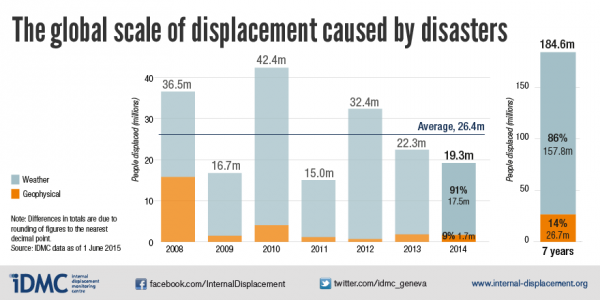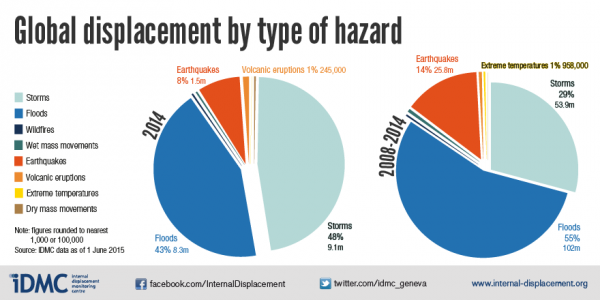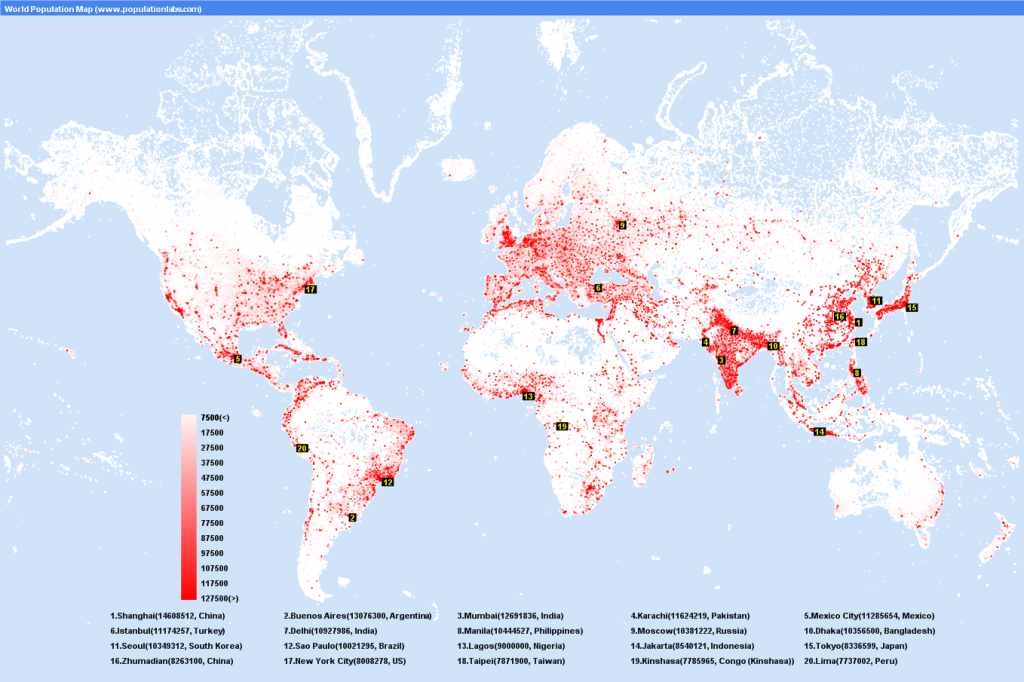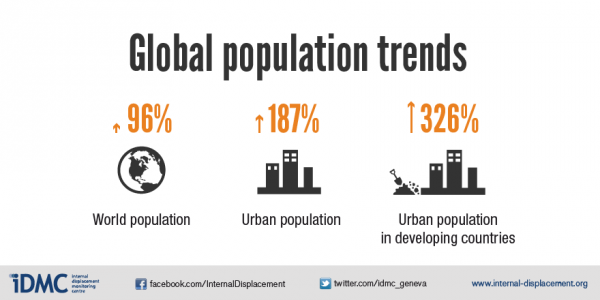By Harland Dahl
Over 19 million people from 100 countries were forced to relocate in 2014 due to the effects of natural disasters including drought, soil degradation, typhoons, cyclones, and other extreme weather events, according to the Internal Displacement Monitoring Centre 2015 Report. The International Organization for Migration has estimated that by 2050, there will be as many as 200 million climate migrants globally.
In Asia, alone, it is estimated that over ten million people were displaced by climate-related extreme weather events in 2011. These numbers include groups like the 200,000 Bangladeshis who are displaced by river erosion each year, or residents of small islands such as Kiribati and Nauru who are threatened by changing environmental conditions and rising sea levels.
In global terms, Asia and the Pacific is the region most affected by extreme weather both in terms of people affected and number of natural disasters occurring in the region. Research from the Asian Development Bank (ADB) cites climate variability as a main driver of migration patterns and displacement within South Asia. Globally, 80% of countries with the largest populations living in low-elevation coastal zones are located in Asia and the Pacific. The Bank estimates that one third of the population in South Asia lives in areas at risk for climate-change-induced sea level rise.
Asia and the Pacific is home to roughly 4 billion people, or nearly 60% of the world’s population. In recent decades, Southeast Asian countries including China, Korea, Singapore, and Hong Kong have experienced periods of rapid economic development. Even so, many Asian countries still face high levels of poverty; about 1.8 billion people in the region live on 2USD or less per day. A resulting lack of infrastructure and resources makes countries of the region highly vulnerable to shocks caused by natural disasters and extreme weather.
Increasing global trends of population growth, urbanization, and settlement in and migration to coastal areas put more and more at risk of cyclones and other extreme weather events. As underdeveloped countries face these challenges, their progress towards economic development and sustainable growth is threatened. According to head of the Global Facility for Disaster Reduction and Recovery Francis Ghesquiere, “Large-scale natural disasters, particularly in fragile and developing countries can set back years of development achievements,” making weather patterns a key concern for development initiatives today.
World bank reports estimate that the number of people directly affected by tropical cyclones, specifically, has tripled in the last 30 years. In this time period, cyclones have killed over 400,000 and affected another 466 million people, with their effects falling disproportionately on underdeveloped areas of Southeast Asia and the Western Pacific.
As global population continues to grow and an increasing number of the world’s poorest are affected by climate variability and hydrological extremes, attention to extreme weather and those it affects is increasingly important.



